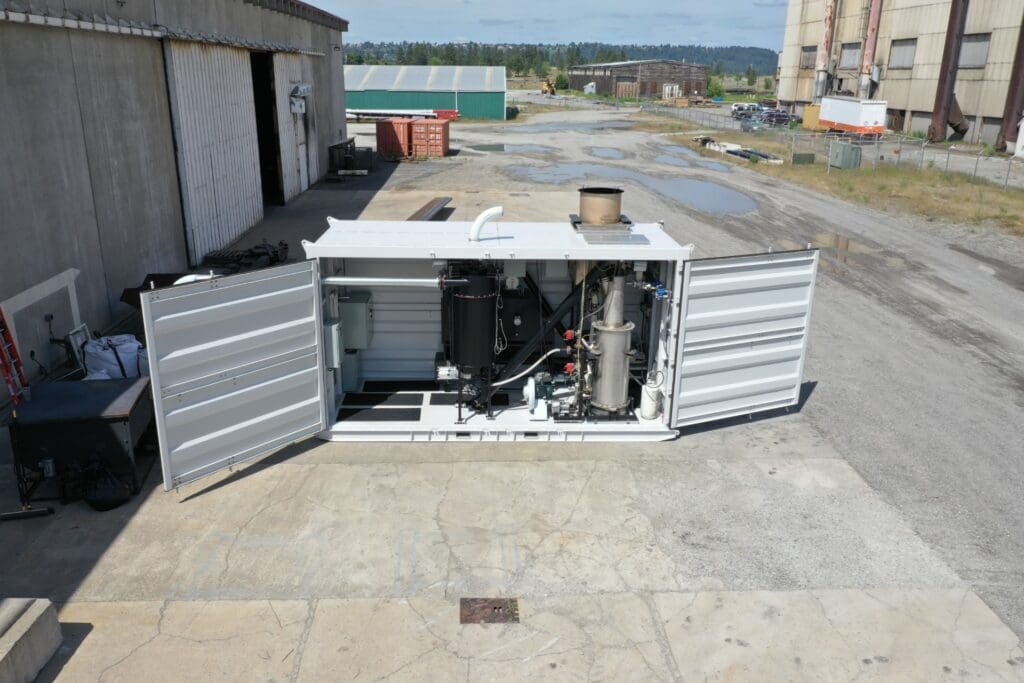SPOKANE, Wash.
September 19, 2022 – Clean AgTech company Qualterra (recently renamed from NuPhY) has been awarded a competitive Industrial Symbiosis grant from the Washington State Department of Commerce to set up a pilot Agricultural Regeneration Center (ARC), helping farmers sequester carbon and combat climate change across the state. The pilot site, on the company’s new Corporate R&D Farm in Cheney, WA, will showcase the ARC’s capacity to convert agricultural waste into valuable soil amendments and sources of renewable energy. “This will be a fully integrated biomass processing site, and proof of concept for a larger network of ARC sites to support our state’s farmers,” explains Dr. Seanna Hewitt, Scientist and Grant Writing Specialist at Qualterra.
At the heart of the ARC, modular Biomass Processing Units (BPUs) pyrolyze agricultural waste and produce biochar and energy. This provides two main carbon-sequestering benefits to the agricultural community. First, they recycle biomass waste into carbon-stable biochar, preventing the waste from releasing carbon dioxide through burning or decay. Second, each BPU generates renewable energy during the biochar production process and prevents burning of fossil fuels. This energy can power a generator, deliver energy to a boiler system, or heat a facility adjacent to the processing unit. While waste reduction and energy generation were the goals when the BPU design was in its infancy, “the value of the biochar was an unexpected surprise,” recounts David Drinkard, Vice President of the Biomass Processing Division at Qualterra, “and in some cases it may be more valuable than the energy produced.” The final biochar product has many applications and can itself act as a carbon sequestration medium. The basic structure of biochar – tiny sponge-like structures of carbon – imparts improved water and nutrient holding capacity, aeration, and microbial activity to amended soils. Plants grown in soil amended with Qualterra biochar use less water and nutrients and are more resilient to stress.
The BPU’s modular nature means it can integrate into a variety of operations; the ARC pilot site will demonstrate integration between the BPU, biomass feed module, biochar storage, and energy usage in an adjacent greenhouse. Once the pilot ARC site is up and running, an on-farm case study is next: “We with work with our partners to set up an ARC at a full-scale agricultural operation and integrate the BPU into real farm systems,” continues Drinkard. The two sites will allow full life cycle analysis of the carbon and costs. CEO Mike Werner summed up the project: “These pilot sites will be an excellent demonstration of our integrated, life cycle technologies, and how they can work synergistically to benefit the health of the plants, the grower’s bottom line, food security, and our environment.”
About Qualterra
Qualterra’s platform of technologies have been developed for over a decade and ensure accelerated production for true-to-type plants and tree fruits, increased yields and plant quality based on unique formulations of biochar that can sequester significant amounts of carbon and responsibly eliminate crop waste, and provide robust genetic and disease testing and other analytical services for growers and producers. Qualterra’s lab is listed by the CPCNW as capable of testing for Little Cherry Virus 2 and X-Disease.
Qualterra is a combination of two recently joined companies: NuPhY and Ag Energy Solutions.


